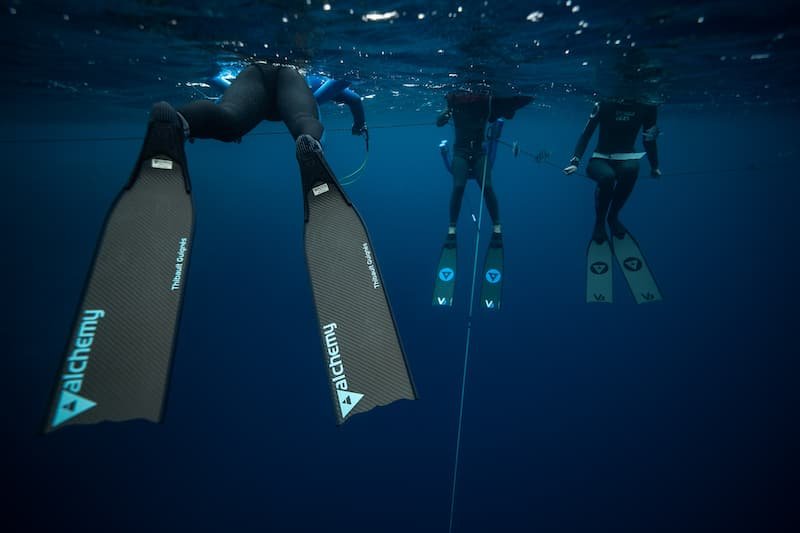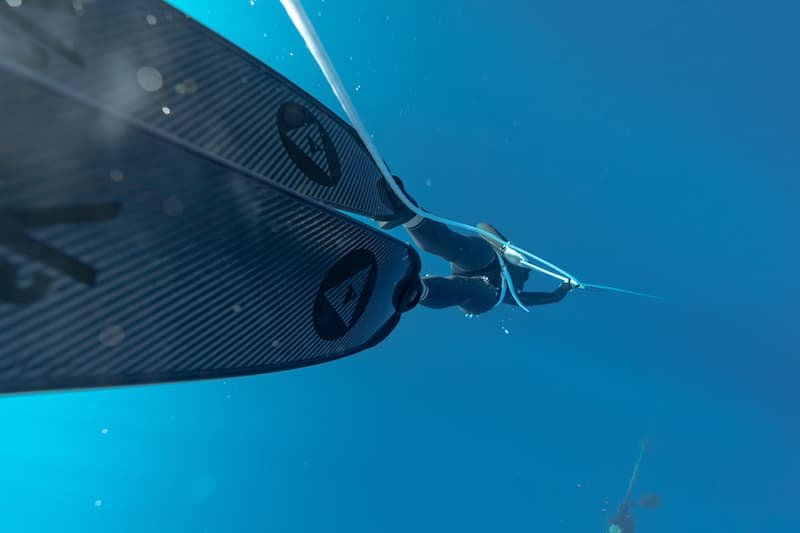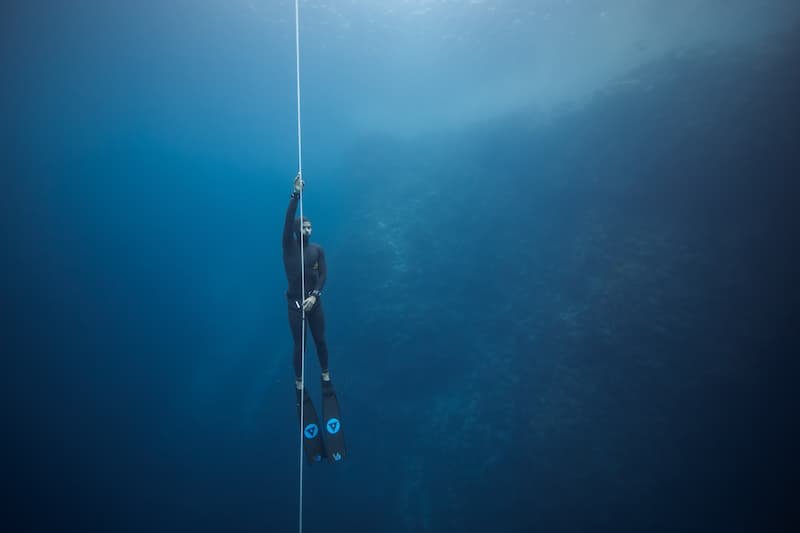With proper adherence to specific safety measures, freediving can be regarded as one of the safest sports. In this episode of The Complete Guide, AIDA instructor-trainer Lily Crespy adeptly covers a wide array of subjects, offering vital advice and methods to guarantee a safe and pleasurable freediving venture. Whether you are a novice or a seasoned freediver, it serves as an invaluable tool, equipping enthusiasts with the knowledge and accountability needed to confidently explore the depths.
Undoubtedly, I will reiterate this point because its importance cannot be emphasized enough: the primary and essential rule is to never engage in freediving alone. Although we may often assume that we understand this, there are instances when complacency can set in, depending on the circumstances. For instance, even if you go spearfishing with a friend, it does not necessarily mean that you are freediving together. Not diving alone means that one person dives while the other's sole responsibility is to watch and rescue. Therefore, if two people go spearfishing, each equipped with a spear gun and both engage in spearfishing simultaneously, neither person truly has a buddy actively watching over them. The only safe way to approach this is by sharing one gun between the two individuals, so that one person descends while the other remains on the surface, solely focused on safety. This principle applies equally to leisurely reef diving and even when engaging in moderately deep snorkeling. You should always ensure that one person remains at the surface while the other explores below. The rule of "never freedive alone" is not limited to deep or maximum attempts; it must be followed at all times. Keeping this in mind can help prevent numerous accidents and tragic fatalities in the world of freediving.

Additionally, when we say "never freedive alone," it implies that the person responsible for your safety cannot be someone like your mother observing you from the poolside while you perform static breath-holds during your vacation. The individual entrusted with your safety must be someone who is trained and knowledgeable, capable of identifying signs of distress and proficient in rescue techniques. They must be familiar with the complete rescue protocol, including the "blow tap talk" method and rescue breaths. In essence, it should be someone who has received proper training in freediving rescue procedures.
Naturally, there are numerous obvious measures to consider, such as employing a lanyard, ensuring the availability of oxygen, and having one or two designated buddies who will meet you at depth. These precautions align with common sense and serve as essential components of a safe diving practice. Additionally, if feasible, utilizing a sonar device or employing a scooter for deep safety, as well as implementing a counter ballast system, are all prudent actions that we are well aware of. It is your responsibility to take every possible step to enhance the safety of each dive, putting in place all the necessary measures and equipment available.

Another crucial piece of advice I would like to emphasize is the regular practice of your skills. Even when you practice, the day you are confronted with a real-life situation can still be quite unsettling, as you cannot predict how you will react in that moment. However, by consistently honing your skills through practice, you can stack the odds in your favor. Regular practice allows you to develop automatic responses and natural reactions, as you have simulated rescue scenarios multiple times. While there may still be an emotional aspect involved, especially if it happens to a close friend or buddy, practicing your skills enables you to rely on ingrained behaviors and reflexes. Engage in drills and simulate fake rescue scenarios with your friends to keep your skills sharp and maintain a high level of preparedness.
If you are genuinely committed to enhancing your understanding of safety and haven't witnessed a real blackout or LMC (Loss of Motor Control), there are a few ways to gain valuable insight. Attending competitions or even participating in them can provide an unfortunate but realistic opportunity to observe actual blackouts or LMC incidents. Additionally, watching videos on platforms like YouTube, although not typically recommended to students to avoid causing unnecessary alarm, can offer valuable knowledge about safety. These videos depict people experiencing LMCs and blackouts, allowing you to familiarize yourself with what such situations actually look like. By exposing yourself to these visuals, you can reduce the chances of being shocked or freezing if you encounter such a scenario in real life.

Another crucial aspect I would like to highlight is the regular inspection of your equipment. It is imperative to ensure that your oxygen bottles are fully charged, and all necessary equipment is readily available in case of an emergency. Verify that everything is in working order, including having an accessible and fully stocked AED (Automated External Defibrillator) and being aware of its location. Procrastinating on these checks can be detrimental when a crisis arises, leaving you with insufficient time to search for items or missing components. Familiarize yourself with the precise locations of all equipment, enabling you to respond swiftly in critical moments where every second counts. Instead of waiting for an unfortunate incident to occur, adopt a proactive approach by regularly inspecting and updating your equipment, guaranteeing that everything is in place and accounted for.
Lastly, it is crucial to, albeit unpleasantly, consider worst-case scenarios. Contemplate the most challenging and dire situations that could potentially occur, as doing so allows you to be prepared and take necessary precautions. By anticipating and envisioning these scenarios, you can proactively put measures in place and plan your actions accordingly. While we all hope to never encounter such situations, being mentally prepared ensures that you won't be caught off guard and will know how to respond effectively. Consider the specific possibilities that may arise based on your diving location, setup, proximity to medical facilities, and available resources. Each individual will have unique factors to consider, depending on whether they dive from a platform or a boat and the distance to the nearest hospital, among other variables. Ponder all potential challenges you may face and strategize on how to minimize risks or prevent them entirely by implementing comprehensive safety measures. With these pieces of advice in mind, I wish you many beautiful and safe dives. Ciao!